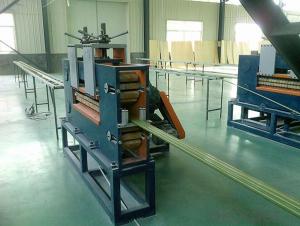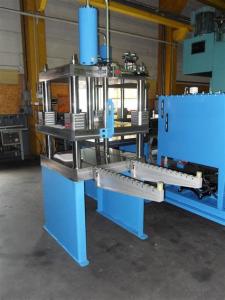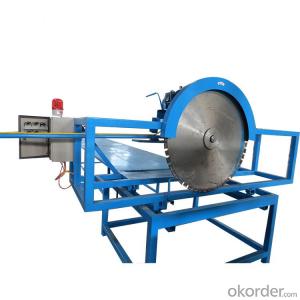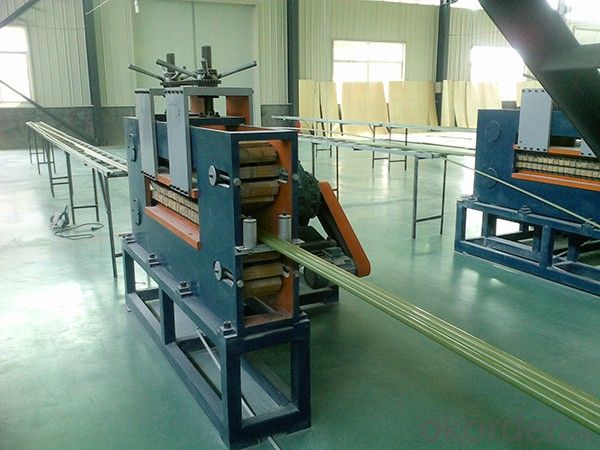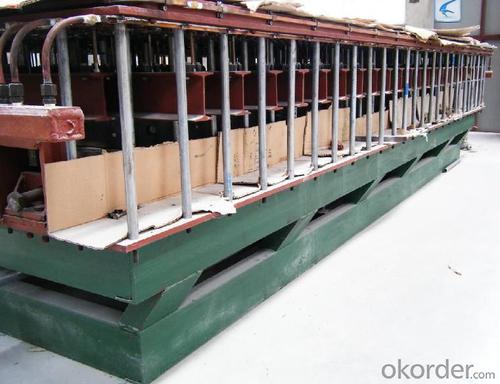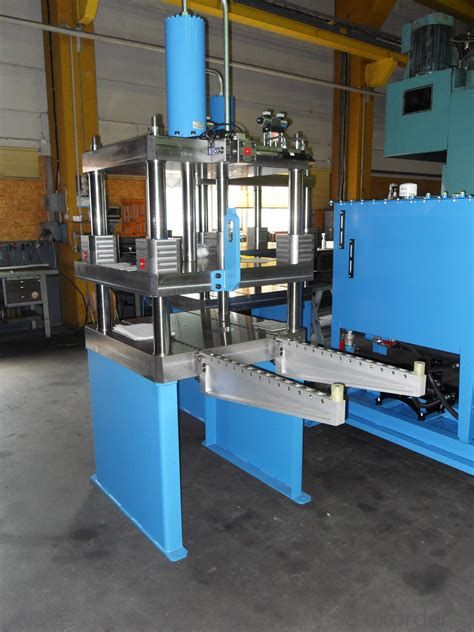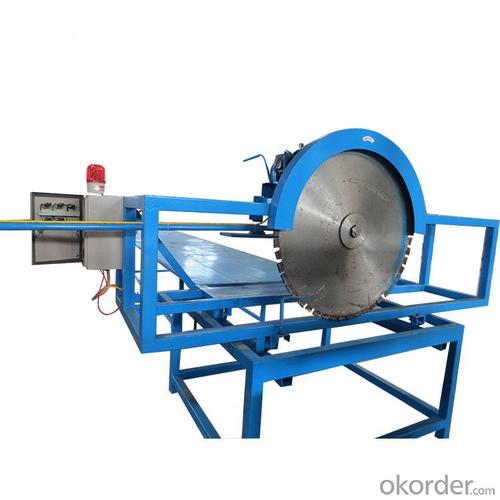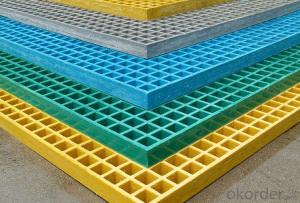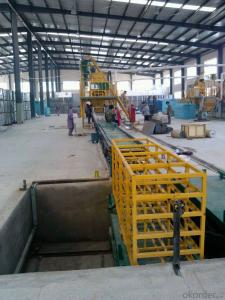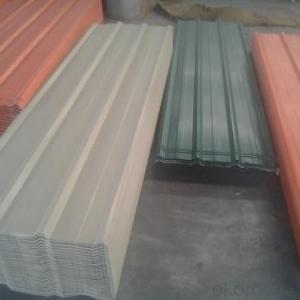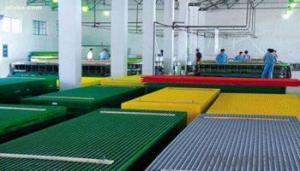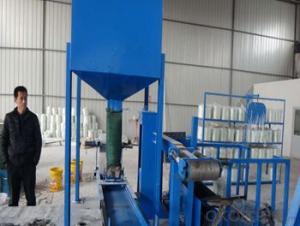FRP Pultrusion Profiles - Pultruded Gratings Anti-Flammable in Various Styles
- Loading Port:
- Tianjin
- Payment Terms:
- TT OR LC
- Min Order Qty:
- 1 watt
- Supply Capability:
- 100000 watt/month
OKorder Service Pledge
OKorder Financial Service
You Might Also Like
PRODUCT DESCRIPTION
Pultruded grating is made by a particular assembly process, which using “I” shape as its main load-bearing and special rod to go through the bearing bar. Pultruded grating include the standard grating and the custom grating, the custom grating can be designed to meet customer’s requirement or special using condition by changing the shape, size and space of the bearing bars, the surface can be covered with lozenge panel, grit panel, or added the anti-slippery sand directly.
FRP pultruded grating has the most characteristics of molded grating, but it has its distinct advantages, it has very high fiberglass content in the loading direction, so it has very high load capability, it has more superiority when used at wide span, so that the basic support will be decreased and the project cost will be reduced accordingly.
SPECIFICATION
The standard space between two crossbars is 6 inch or 12 inch.
Thickness (mm) | Bar width (mm) | Open space (mm) | Open rate (%) | Approx weight (kg/m |
25.4 | 15.2 | 22.8 | 60 | 13.2 |
25.4 | 15.2 | 15.2 | 50 | 15.9 |
25.4 | 15.2 | 10.1 | 40 | 18.5 |
25.4 | 40 | 10.8 | 21 | 14.5 |
38.1 | 15.2 | 22.8 | 60 | 15.8 |
38.1 | 15.2 | 15.2 | 50 | 19.1 |
38.1 | 15.2 | 10.1 | 40 | 22.4 |
50.8 | 25.4 | 25.4 | 50 | 16.6 |
50.8 | 25.4 | 12.7 | 33 | 21.1 |
CHOICE FOR PULTRUDED GRATING
Resin: GP resin, ISO resin, VE resin, Phenol resin
Color choice: Yellow, gray, green, custom color
Surface choice: Groove surface, grit surface, lozenge cover surface
FEATURES
a. Anti-corrosion and anti-rust
b. Light weight and high strength
c. Anti-flammable
d. Anti- fatigue
e. Safe and anti-slippery
f. Anti-ageing
g. Easy of maintenance
h. Good economic benefit
FIELDS SERVED
Sewage treatment,
water supply and drainage,
chemical industry,
oil industry,
power engineering,
pulp and paper,
construction engineering,
spinning, marine engineering.
APPLICATION
Operation terrace,
stair walkway,
ground floor,
trench cover,
sidewalk,
foot bridge,
equipment safety fence,
scaffold.
COMPANT DESCRIPTION
CNBM,China National Building Materials Group is a state-owned enterprise in charge of administrative affairs in china building materials industry. Established in 1984, CNBM is a large group corporation of building materials with total assets of 25 billion RMB and a total staff of 30,000.CNBM now owns 200 subordinating firms of solely owned and joint-venture companies.
CNBM International Corporation is one subsidiary of CNBM, we focus on offering good-quality products,professional service and complete solution to our customers. Strong delivery capacity, advanced technology& management, strong financing capability and excellent after-sale service are our advantages in sharing international market.
FAQ
1.Q:Are you factory or trading company ?
A:We are Factory produce FRP machines and FRP products.
2.Q:If can customized by customers requirements?
A:yes,we can produce the machine with customized size.
3.Q:How about the payment?
A:We accept any kind of payment.
4.Q:What is the guarantee?
A:Gurantee is one year.
5.Q:If you can training?
A:yes ,we can training in our factory also can send engineers to your factory training.
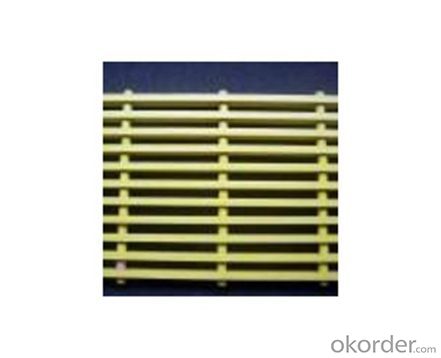
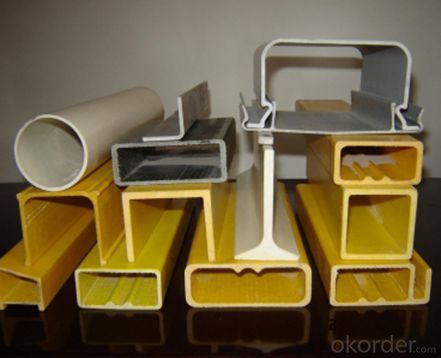
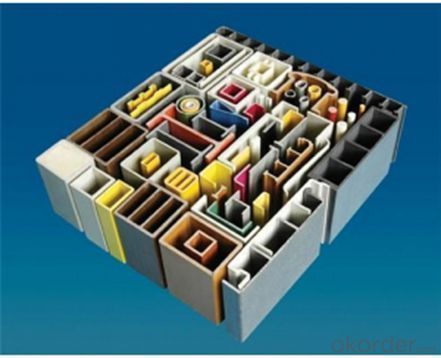
- Q: What is the lifespan of FRP pultrusion profiles?
- The lifespan of FRP (Fiber Reinforced Polymer) pultrusion profiles can vary depending on several factors. Generally, FRP pultrusion profiles have a long lifespan and are known for their durability and longevity. One key factor that influences the lifespan of FRP pultrusion profiles is the quality of the materials used in their construction. High-quality FRP materials, such as those made with premium resins and high-strength fibers, tend to have a longer lifespan compared to lower-quality materials. Additionally, the environmental conditions in which the FRP pultrusion profiles are installed can impact their lifespan. Exposure to extreme temperatures, moisture, UV radiation, chemicals, and mechanical stresses can all affect the performance and lifespan of FRP profiles. Therefore, proper installation and maintenance are crucial to ensuring their longevity. When properly designed, manufactured, and installed, FRP pultrusion profiles can have a lifespan ranging from 25 to 50 years or even longer. However, it is important to note that this estimate can vary depending on the specific application, the level of exposure to harsh conditions, and the overall care and maintenance of the profiles over time. Regular inspections, cleaning, and repairs, if necessary, can help extend the lifespan of FRP pultrusion profiles. Consultation with manufacturers or industry experts can provide more specific information on the expected lifespan of FRP profiles for a particular application or environment.
- Q: Are FRP pultrusion profiles resistant to impact from heavy machinery?
- The high strength-to-weight ratio and excellent mechanical properties of FRP pultrusion profiles are well-known, making them resistant to various external impacts. However, their resistance to heavy machinery impacts depends on several factors. The impact resistance of FRP pultrusion profiles is determined by their design, composition, and reinforcement materials. Manufacturers use different materials like fiberglass, carbon fiber, or composites, which greatly affect the profiles' ability to withstand heavy machinery impacts. The thickness and overall dimensions of the FRP profiles also contribute to their impact resistance. Thicker profiles offer better resistance to impact loads than thinner ones. Additionally, profiles with reinforced sections or extra layers for structural integrity can further enhance their impact resistance. Considering the specific application and magnitude of impact from heavy machinery is crucial. While FRP pultrusion profiles can generally withstand moderate to high impacts, extreme forces or heavy machinery with substantial weight can still cause damage. In such cases, additional protective measures like impact-resistant coatings or metal inserts may be necessary. In conclusion, FRP pultrusion profiles demonstrate good resistance to impact from heavy machinery due to their inherent strength and durability. However, it is advisable to consult with the manufacturer or a structural engineer to ensure that the profiles meet the specific requirements of the application and machinery involved.
- Q: Are FRP pultrusion profiles resistant to fuels?
- Yes, FRP (Fiber Reinforced Polymer) pultrusion profiles are highly resistant to fuels. Due to their inherent corrosion resistance and non-reactive nature, FRP pultrusions can withstand exposure to a wide range of fuels, including gasoline, diesel, and aviation fuels, without deteriorating or losing their structural integrity. This makes them suitable for various applications in industries such as automotive, aerospace, and oil and gas, where resistance to fuel exposure is crucial.
- Q: How do FRP pultrusion profiles perform in high-humidity environments?
- FRP (Fiber Reinforced Polymer) pultrusion profiles are known for their excellent performance in high-humidity environments. The combination of the reinforced fibers and polymer matrix in FRP profiles makes them highly resistant to the detrimental effects of moisture and humidity. One of the key advantages of FRP materials is their inherent resistance to corrosion, which is especially crucial in high-humidity environments where moisture content is significantly higher. Unlike traditional materials such as steel or wood, FRP pultrusion profiles do not rust, rot, or decay when exposed to moisture. This makes them well-suited for various applications where constant exposure to humidity is expected, such as in coastal areas or industrial settings. Additionally, the polymer matrix used in FRP profiles acts as a barrier against moisture absorption. This prevents the profiles from expanding, warping, or cracking, even in extreme humidity conditions. The high-strength fibers embedded in the polymer matrix provide additional reinforcement, ensuring the profiles retain their structural integrity and dimensional stability over time. Furthermore, FRP pultrusion profiles are also resistant to mold and mildew growth, which are commonly associated with high-humidity environments. This feature is highly beneficial, as it reduces the need for frequent maintenance and cleaning, making FRP profiles a cost-effective and low-maintenance solution. In conclusion, FRP pultrusion profiles exhibit exceptional performance in high-humidity environments. Their resistance to corrosion, moisture absorption, and mold growth make them a reliable choice for applications that require durability and longevity in such conditions.
- Q: Are FRP pultrusion profiles UV resistant?
- Yes, FRP (Fiber Reinforced Polymer) pultrusion profiles are typically UV resistant. This is because they are manufactured using a combination of polymer resin and reinforced fibers such as fiberglass. These materials have inherent UV resistant properties, making FRP pultrusion profiles resistant to damage caused by prolonged exposure to sunlight and ultraviolet radiation. UV resistance is a crucial characteristic for outdoor applications where the profiles will be exposed to sunlight, such as in construction, infrastructure, and marine industries. However, it is important to note that the level of UV resistance may vary depending on the specific resin and fiber composition used in the manufacturing process. Therefore, it is recommended to consult the manufacturer or supplier for specific information on the UV resistance of FRP pultrusion profiles for a particular application.
- Q: Can FRP pultrusion profiles be used in the construction industry?
- Yes, FRP pultrusion profiles can be used in the construction industry. FRP (Fiber Reinforced Polymer) pultrusion profiles offer several advantages such as high strength-to-weight ratio, corrosion resistance, and durability. These profiles can be used in various construction applications such as structural support systems, window and door frames, bridge components, and building facades. They provide a lightweight and cost-effective alternative to traditional construction materials like steel and concrete.
- Q: Can FRP pultrusion profiles be used in chemical storage tanks?
- Yes, FRP pultrusion profiles can be used in chemical storage tanks. FRP (Fiber Reinforced Plastic) materials are known for their excellent corrosion resistance and durability, making them an ideal choice for storing various chemicals. The pultrusion process further enhances the strength and structural integrity of the profiles, making them suitable for demanding applications like chemical storage tanks.
- Q: Can FRP pultrusion profiles be used in the construction of agricultural structures?
- Yes, FRP pultrusion profiles can be used in the construction of agricultural structures. FRP pultrusion profiles are lightweight, durable, and resistant to corrosion, making them suitable for various agricultural applications such as greenhouse framing, livestock enclosures, and storage sheds. They offer excellent strength-to-weight ratio and can withstand harsh environmental conditions, making them a reliable choice for agricultural construction.
- Q: Do FRP pultrusion profiles have any limitations or drawbacks?
- Yes, FRP pultrusion profiles do have some limitations and drawbacks. One limitation is their susceptibility to UV degradation, which can cause discoloration and reduced mechanical properties over time if not properly protected. Additionally, FRP pultrusion profiles have relatively low impact resistance compared to materials like steel or aluminum. They may also have limited fire resistance and can melt or burn under high temperatures. Finally, the manufacturing process for FRP pultrusion profiles can be time-consuming and expensive, making it less suitable for small-scale or customized applications.
- Q: Are FRP pultrusion profiles resistant to humidity or moisture?
- FRP pultrusion profiles exhibit remarkable resistance to humidity and moisture. Their inherent ability to repel water absorption stems from the amalgamation of fiberglass reinforcement and a polymer resin matrix. Unlike conventional materials such as wood or metal, FRP pultrusion profiles remain unaffected by moisture or heightened humidity levels, as they neither expand, distort, nor corrode. This moisture resistance renders FRP pultrusions suitable for a diverse array of applications spanning across industries like construction, infrastructure, and marine environments. Moreover, the resistance to moisture can be further bolstered by applying additional protective coatings or surface finishes to FRP pultrusion profiles, thereby escalating their resilience against humidity and moisture.
Send your message to us
FRP Pultrusion Profiles - Pultruded Gratings Anti-Flammable in Various Styles
- Loading Port:
- Tianjin
- Payment Terms:
- TT OR LC
- Min Order Qty:
- 1 watt
- Supply Capability:
- 100000 watt/month
OKorder Service Pledge
OKorder Financial Service
Similar products
Hot products
Hot Searches
Related keywords
